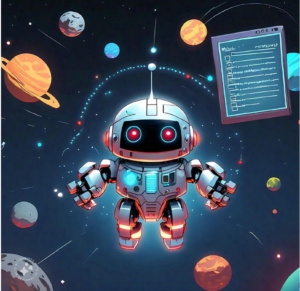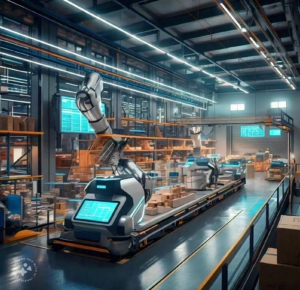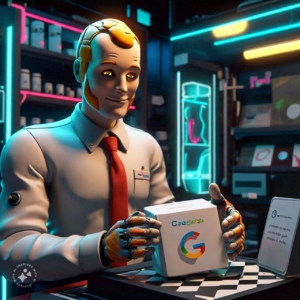Building an Enterprise Grade RAG System for Agentic AI-Part 2
This is part 2 of a series of blog posts in which we will develop a sophisticated, enterprise grade RAG system step by step. We will add features progressively. In part 1, we developed a basic feature rich RAG system using LanceDB and Instructor for structured LLM outputs to serve as the foundation for this series. In part 2 (this article), we will build upon that to improve our RAG system using some of the improvements that we suggested at the end of the last part
Building an Enterprise Grade RAG System for Agentic AI-Part 1
This is part 1 of a series of blog posts in which we will develop a sophisticated, enterprise grade RAG system step by step. We will add features progressively. In part 1 (this article), we will develop a basic RAG system which is feature rich and will form the foundation for this series.
Revolutionizing Local Branding with AI: Fine-tuning Stable Diffusion using DreamBooth
In the rapidly evolving landscape of AI-generated art, one question sparked our curiosity: Could we harness the power of Stable Diffusion to generate high-quality images of local products that weren’t part of the model’s original training data? Enter: Dreambooth. DreamBooth is a training technique that updates the entire diffusion model by training on just a few images of a subject or style. It works by associating a special word in the prompt with the example images. This article documents our journey of fine-tuning Stable Diffusion using DreamBooth, with a local cookies brand as our test subject.
Building Intelligent AI Agents: Context-Aware Task Automation
In today’s AI landscape, building agents that can maintain context and make informed decisions is crucial. Let’s explore our implementation of a dialog-driven AI system that excels at contextual decision-making.
System Prompt Improvement Using Dialog Engineering and Burr
We’ll use the chat history and annotations in Burr to update our system prompt based on our usage and evolving requirements. Letting the dialog do the prompt engineering for us. As described in Dialog Engineering vs Prompt Engineering
Building a Knowledge Graph: From Extracted Data to Connected Intelligence
Knowledge graphs are powerful tools that organize data into interconnected networks, making it easier to understand relationships, discover patterns, and gain insights from complex information. Unlike traditional databases, which store data in isolated tables, knowledge graphs emphasize connections, allowing data to be explored in context. They’re used by major tech platforms to fuel search, recommendations, and advanced analytics, transforming raw data into actionable intelligence.
Is Your Supply Chain Missing the AI Revolution?
In today’s hyper-competitive business landscape, staying ahead isn’t just about keeping pace — it’s about setting the pace. For supply chain and logistics leaders, the AI revolution isn’t just knocking at the door; it’s redefining the entire playing field. If you’re not leveraging AI, especially Generative AI and Machine Learning, you’re not just missing out on efficiencies — you’re potentially ceding ground to more tech-savvy competitors.
Dialog Engineering vs Prompt Engineering
Instead of wasting time crafting the perfect system prompt and few-shot examples, just talk to the LLM.
Linking Extracted Entities to Wikidata: Why and How?
In the evolving world of data science and artificial intelligence, knowledge graphs have emerged as powerful tools for structuring information, enabling sophisticated querying, and revealing hidden insights. In a previous blog, I described how to extract entities and relationships from raw PDF content. However, building a robust knowledge graph isn’t just about extracting entities and relationships from raw data — it’s also about ensuring those entities are meaningful, well-defined, and interoperable with other datasets.
How To Extract Structured Knowledge From Unstructured PDFs?
In today’s data-driven world, organizations are sitting on goldmines of information locked away in countless PDF documents. These files, while easily readable by humans, pose a significant challenge for machines trying to understand and utilize their contents. Whether it’s research papers, technical manuals, or business reports, PDFs often contain valuable knowledge that could power intelligent systems and drive data-informed decisions.
Building a production grade Q&A System for Knowledge Graphs and PDFs with LangChain Agents, Neo4j and Large Language Models (PART 2)
This is the second part of a series of articles called “Building a production grade Q&A System for Knowledge Graphs and PDFs with LangChain Agents, Neo4j and Large Language Models”. In the first part, I explained how the Q&A system for Knowledge Graphs (KG Q&A) worked. In this part, I will explain the working of the Q&A system for PDFs (PDF Q&A)
Democratizing Data Access: Leveraging Vertex AI, BigQuery, Dataplex, and the PaLM API for Natural Language SQL Queries
In this comprehensive guide, we explore the integration of cutting-edge technologies such as Vertex AI Workbench, BigQuery, Dataplex, and the PaLM API to create a revolutionary conversational interface. This interface is designed to translate natural language questions into GoogleSQL queries, enabling non-SQL users, particularly marketing teams, to access and analyze data effortlessly. By harnessing these powerful tools, we aim to eliminate technical barriers and streamline data interactions, ensuring that insights are just a question away.
Enhancing Conversational AI with Dialogflow and Vertex AI: A Deep Dive into Vertex AI Agent Builder
In today’s interconnected digital environment, effective engagement with users is critical for enterprises. This blog explores the transformative potential of Vertex AI Agent Builder, a sophisticated tool from Google Cloud that empowers developers to create dynamic conversational agents, even without extensive machine learning expertise.
Building a production grade Q&A System for Knowledge Graphs and PDFs with LangChain Agents, Neo4j and Large Language Models (PART 1)
Building a Q&A system is an intriguing challenge in many ways. Typically, a simple Q&A system involves building a knowledge base, retrieving relevant knowledge from the knowledge base and using that knowledge to answer the user’s query. In this blog, I will describe two such Q&A systems. Both use an LLM-powered reasoning agent to interact with the user but are differentiated by the knowledge base where all the relevant information is stored.
The first, which I will call KG Q&A, uses a Neo4j Knowledge Graph (KG) as its knowledge base and the second, which I will call PDF Q&A, uses a Milvus vector store as its knowledge base. Both Q&A systems have an agent that stores chat history for each user (identified by a unique User ID) separately. This allows the agent to hold separate conversations with each user.
A.I Exercise Posture Assistant using GPT-4 Vision with a FastAPI backend and a Streamlit frontend
In today’s digital age, as our lifestyles become increasingly sedentary, fueled by prolonged screen time and idle habits, the importance of physical activity for both our physical and mental well-being has become undeniable. In light of that, the significance of maintaining proper posture during exercise cannot be overstated, as it directly impacts both the effectiveness of the workout and the prevention of potential injuries. Incorrect posture can lead to muscle imbalances, joint strain, and decreased range of motion, hindering progress and increasing the risk of long-term complications. To address these issues, welcome to our latest innovation in fitness technology: the AI Exercise Posture Assistant.
Leveraging the power of the OpenAI Python library, we’ve developed a cutting-edge software solution designed to revolutionize your workout experience. Say goodbye to improper form and hello to optimized performance, as our AI system analyzes your movements in real time, providing personalized feedback and guidance to ensure you achieve the perfect posture for every exercise. Whether you’re a seasoned athlete or just beginning your fitness journey, our AI Exercise Posture Assistant is here to help you reach your goals safely and effectively. Let’s dive right in and get moving!
Harnessing the Power of Generative AI for Next-Gen Search Experiences using Google Vertex AI Search
In today’s data-driven world, the ability to access and understand information across a multitude of platforms is paramount. Organizations face the critical challenge of enhancing discoverability amidst scattered data — from documents to databases and web pages. This blog explores how generative AI can transform search services to meet the high demands of today’s enterprises.
Simplifying Marketing Analytics with Google Cloud: A Beginner’s Guide
In today’s digital world, leveraging marketing analytics can significantly enhance the effectiveness of your advertising efforts. Google Cloud offers an extensive suite of tools and services tailored for this purpose, known as the Marketing Analytics Jumpstart. This guide aims to demystify the process of setting up a robust marketing analytics framework using Google Cloud, ensuring clarity and simplicity for beginners.
Ronaldo/Messi Individual Highlights Maker using YOLOv8 Detection and Tracking in Streamlit
Lionel Messi and Cristiano Ronaldo, synonymous with football excellence, have collectively shaped an era where their individual brilliance on the pitch transcends mere competition. Their extraordinary skills, stunning goals, and unmatched athleticism have not only etched their names in the archives of football history but have also given rise to a captivating spectacle that transcends the sport itself. The individual highlights of Messi and Ronaldo, capturing their mesmerizing goals and unparalleled feats, stand as some of the most watched and celebrated moments in the world of sports. If it wasn’t already apparent, I am an avid football enthusiast with the added perk of working in the field of artificial intelligence. Consequently, I made the deliberate choice to merge these two passions, resulting in an immensely enjoyable and fascinating endeavor. This synergy not only offers immense personal satisfaction but also presents a myriad of opportunities and potential monetary value. Without any more delay, let’s jump right into it.
Building an LLM-Powered Question Answering system for private documents on Discord
In the realm of Natural Language Processing (NLP), constructing a Question and Answer (Q&A) system presents an exciting challenge. This tutorial will illustrate how to develop a robust Q&A system using open-source tools and components including LangChain, GPT-3 (ChatGPT), OpenAI Embeddings, and FAISS Vector Index, and integrate the system as a Bot within a Discord application. This system empowers users to query their own PDF documents and receive precise answers. Let’s delve into the steps to craft this potent tool.
Multi-Label Video Classification using PyTorch Lightning Flash
Pytorch Lightning Flash is an amazing framework that allows you to build models without being overwhelmed by all the details, and then seamlessly override and experiment with Lightning for full flexibility. However, for some tasks, we can take a deep dive into the details and unearth gems to produce some magic!
Using your own custom dataset, you can follow this comprehensive pipeline to achieve Multi-Label Video Classification.
Video Classification using PyTorch Lightning Flash and the X3D family of models
Video Classification is the machine learning task of assigning labels to actions identified in a given video. The main objective is to predict the specific class to which the video clips belong.
An easy, simple, and highly flexible approach to achieving this is by using the Pytorch Lightning Flash API. Built on top of Pytorch LightningAI, it constitutes a collection of tasks for fast prototyping, establishing baselines, and fine-tuning scalable Deep Learning models. Its primary advantage lies in the flexibility it offers. All data loading in Flash is executed via a from_* class method on a DataModule. Lightning DataModules are shareable and reusable objects that encapsulate all data-related code.
Flash enables quick loading of videos and labels from various formats such as config files or folders into DataModules.
Given that the task at hand is Video Classification, the Flash class VideoClassificationData will be employed to create the DataModule. To load the video model used for training, the VideoClassifier class permits access to models and their weights. Both of these classes rely on Pytorch Video.
Empowering Your Business with an IVR System: A Step-by-Step Guide to Amazon Lex and Amazon Connect Integration (Part 1/3)
Implementing an IVR system in your business can significantly empower your operations and enhance the customer experience. By integrating technologies like Amazon Lex and Amazon Connect, you can automate processes, provide self-service options, and improve efficiency in industries such as healthcare, banking, telecommunications, and e-commerce.
Resolution Enhancements – Super Resolution techniques using Deep Learning – Part III
Image enhancement, picture quality improvement and increasing resolution of images without a significant drop in quality have been one of the major application areas of Deep Learning based Artificial Intelligence techniques in recent years. These technologies are collectively called Super Resolution (SR). This is part III of series of blogs on this topic.
A gentle introduction to Super Resolution techniques using Deep Learning – Part II
Image enhancement, picture quality improvement and increasing resolution of images without a significant drop in quality have been one of the major application areas of Deep Learning based Artificial Intelligence techniques in recent years. These technologies are collectively called Super Resolution (SR). Several researchers have developed successful techniques that have pushed State-Of-The-Art and applied them to several different applications and use cases. Recently, these techniques have also been successfully extended to video processing. In last post, we introduced some basics and this is about some additional use cases.
A gentle introduction to Super Resolution techniques using Deep Learning – Part I
Image enhancement, picture quality improvement and increasing resolution of images without a significant drop in quality have been one of the major application areas of Deep Learning based Artificial Intelligence techniques in recent years. These technologies are collectively called Super Resolution (SR). Several researchers have developed successful techniques that have pushed State-Of-The-Art and applied them to several different applications and use cases. Recently, these techniques have also been successfully extended to video processing.
























